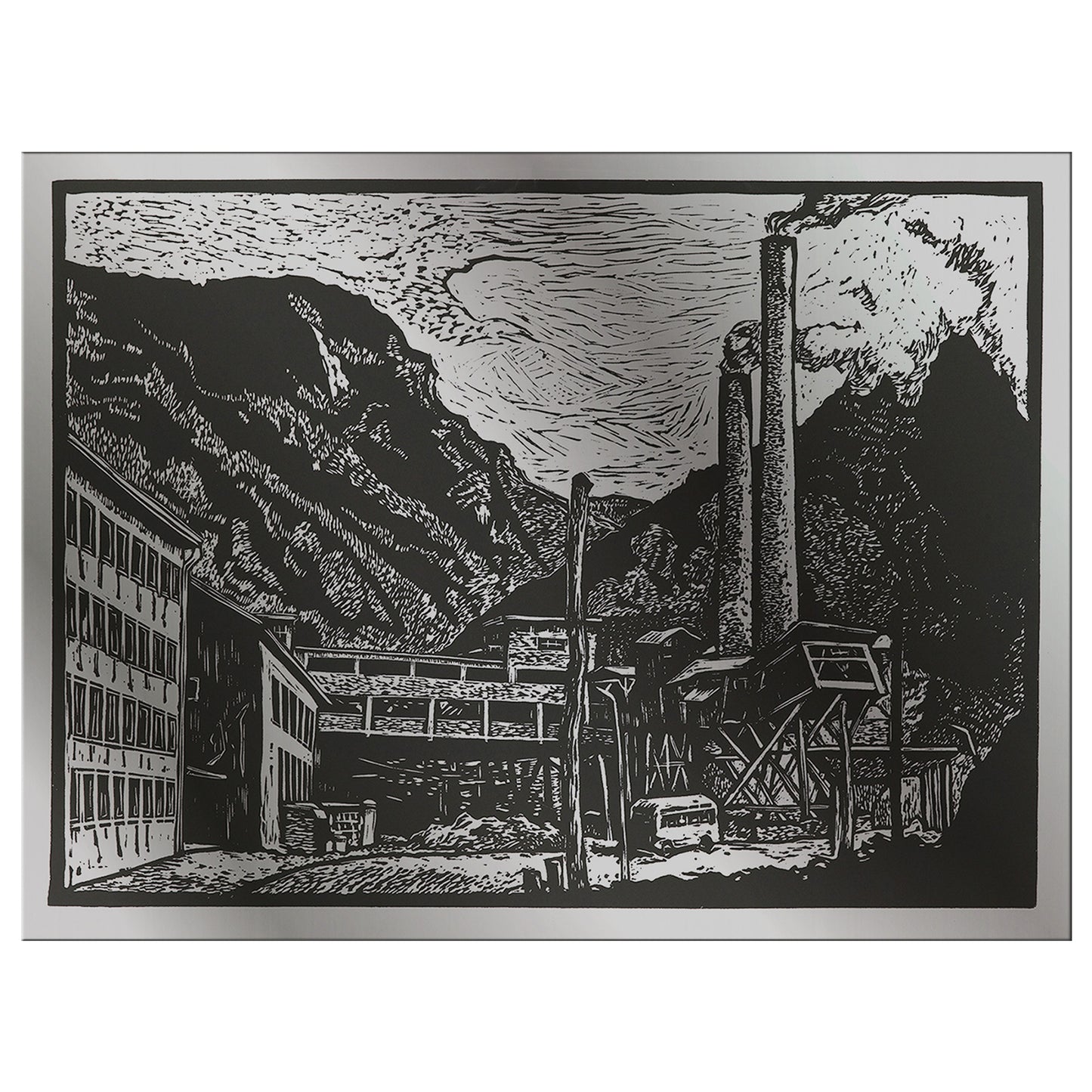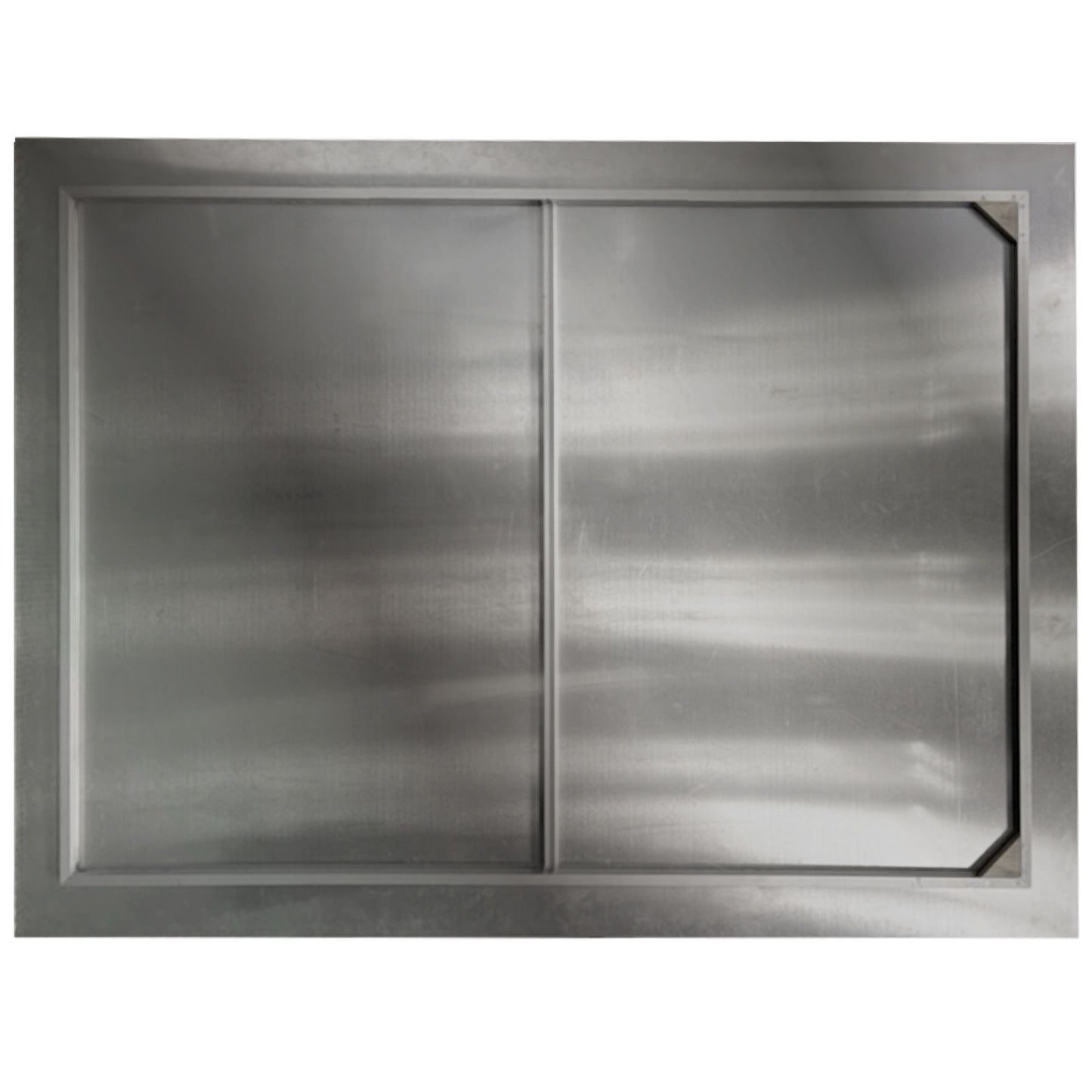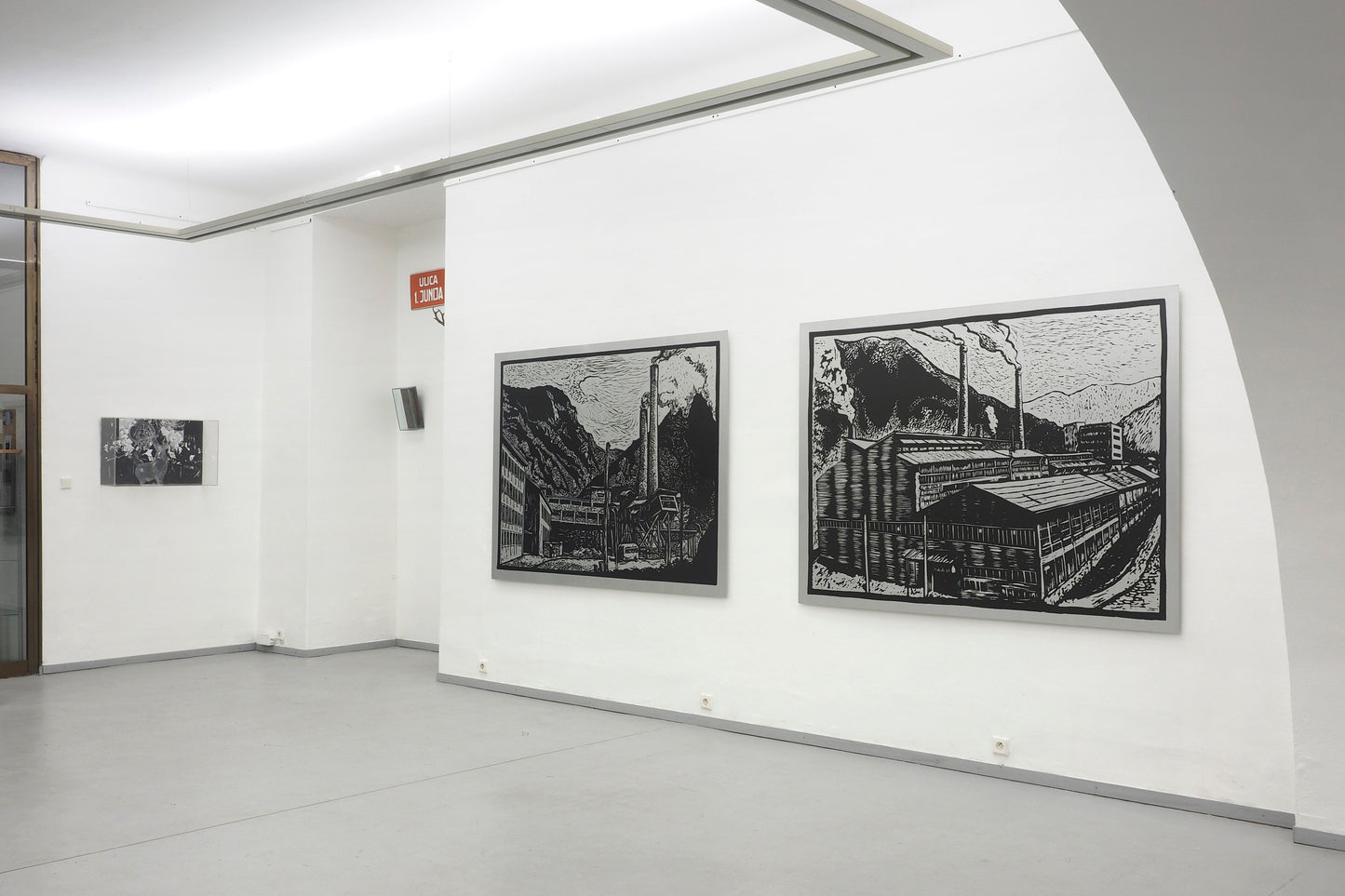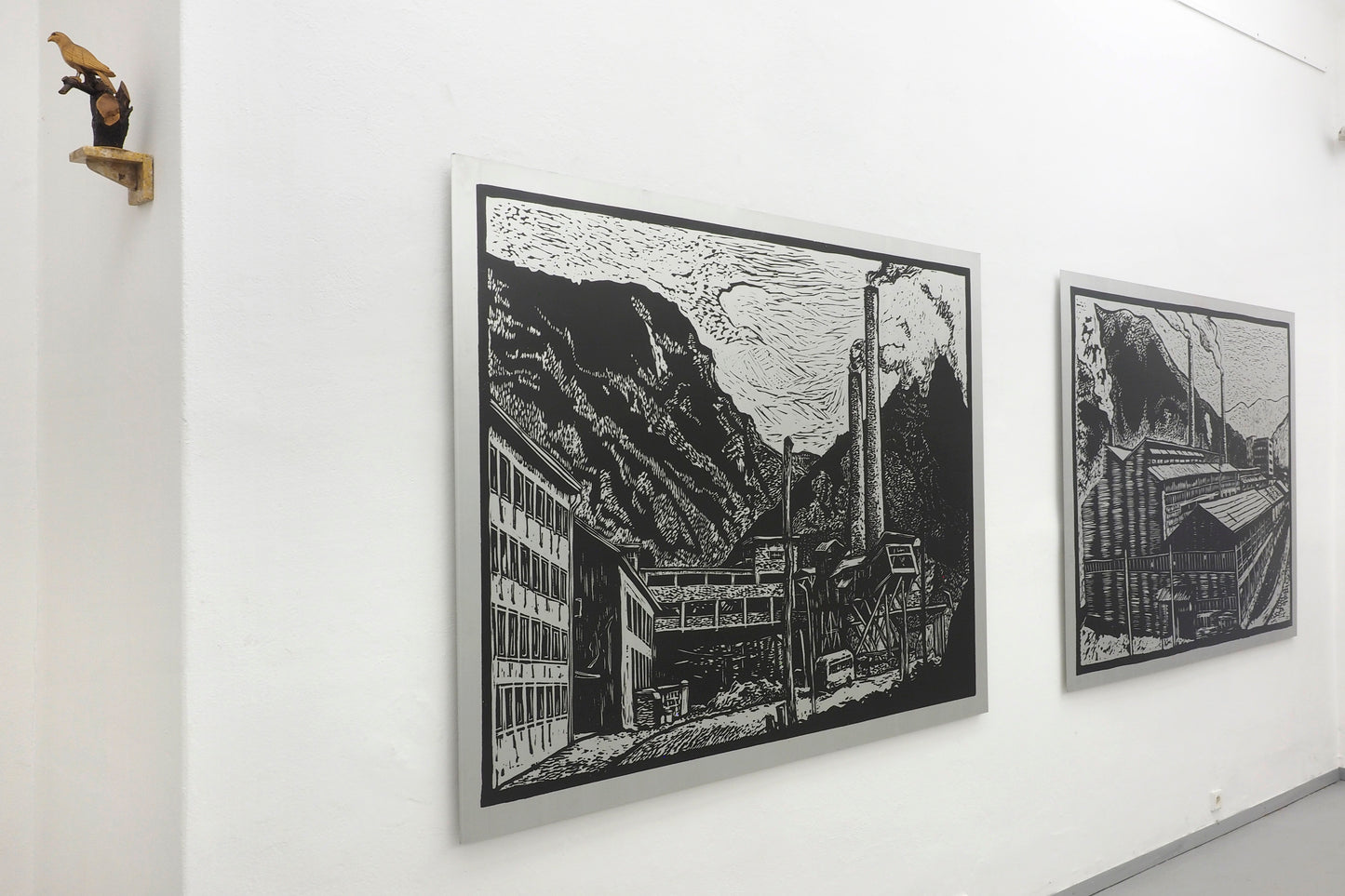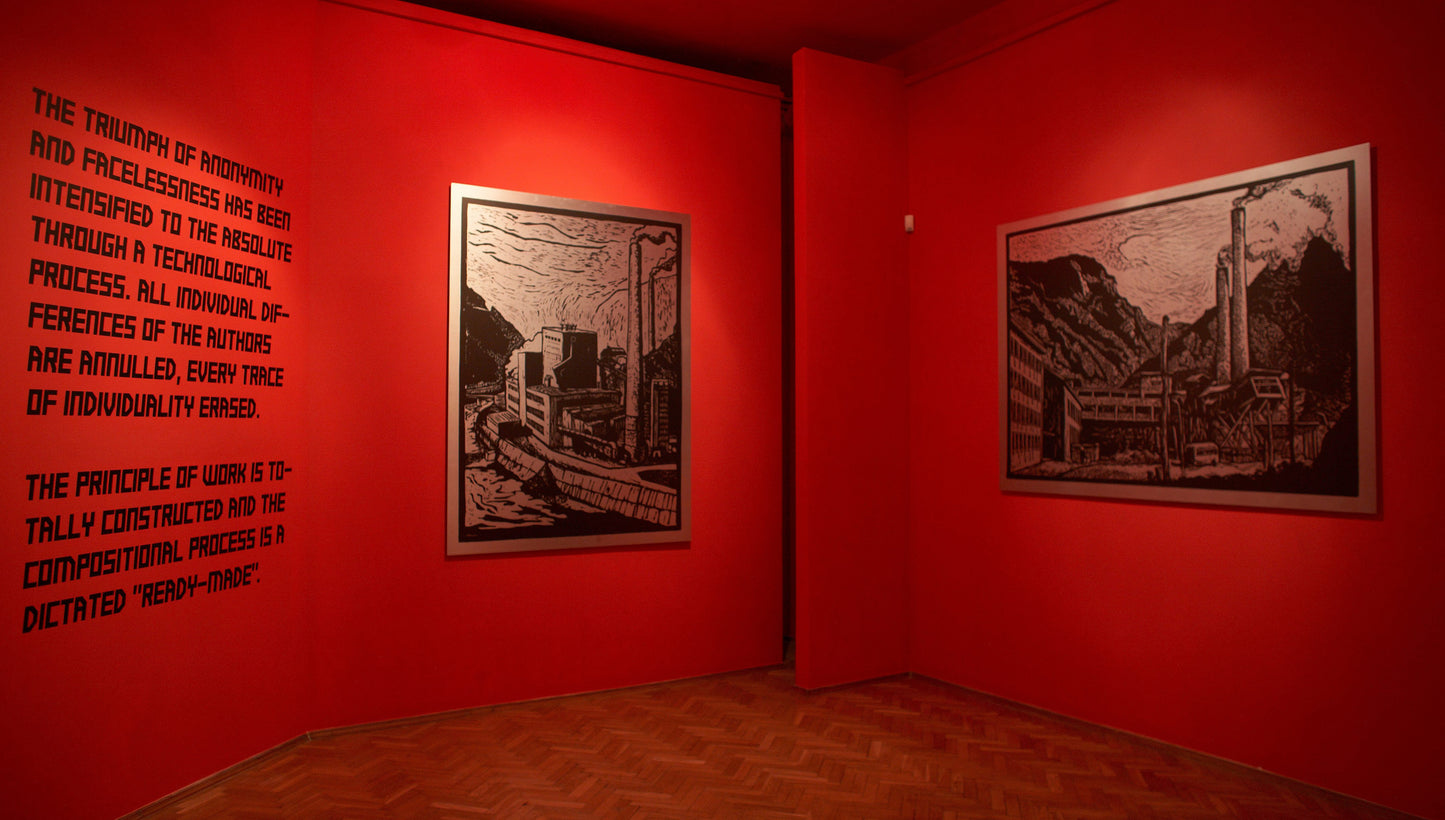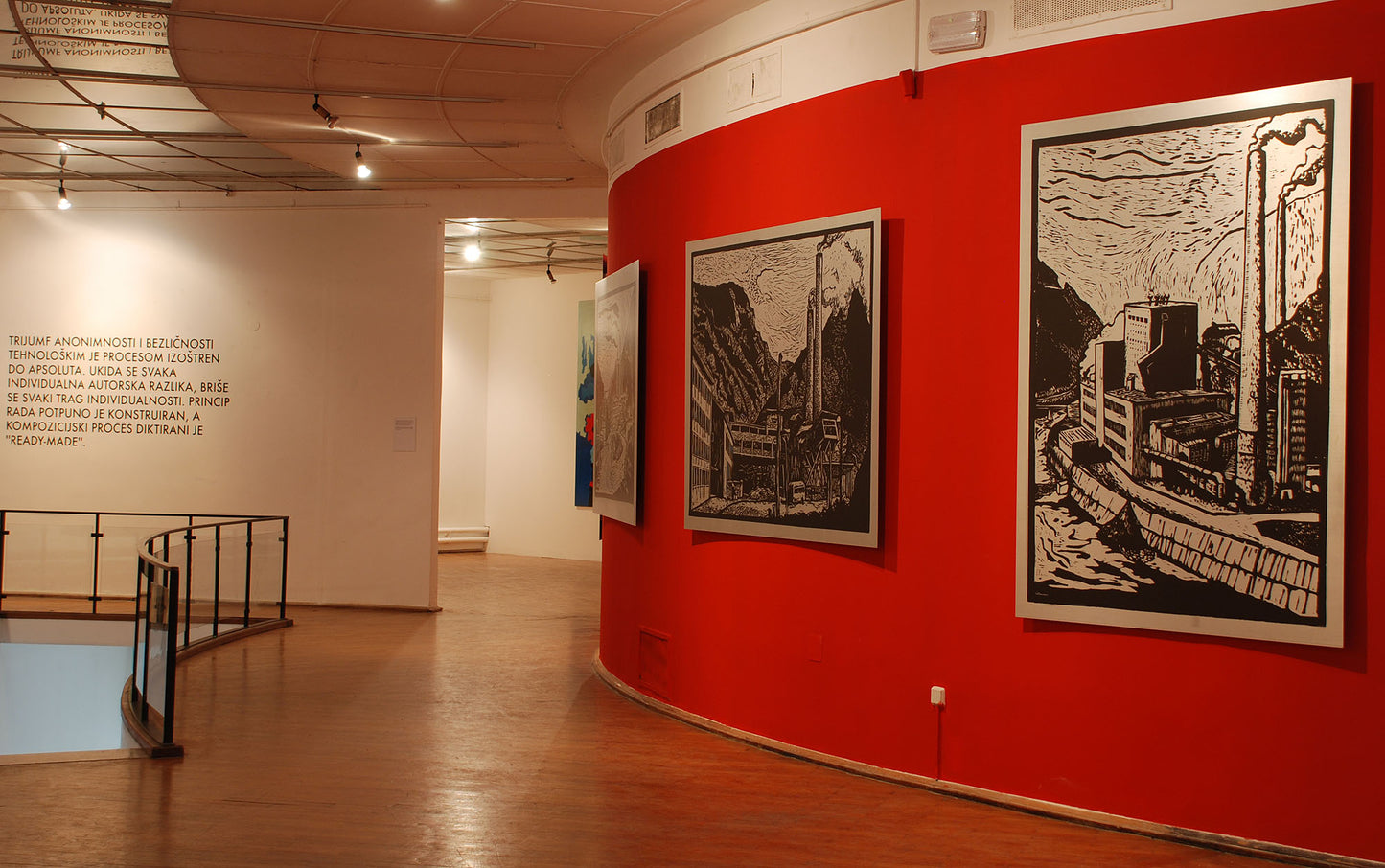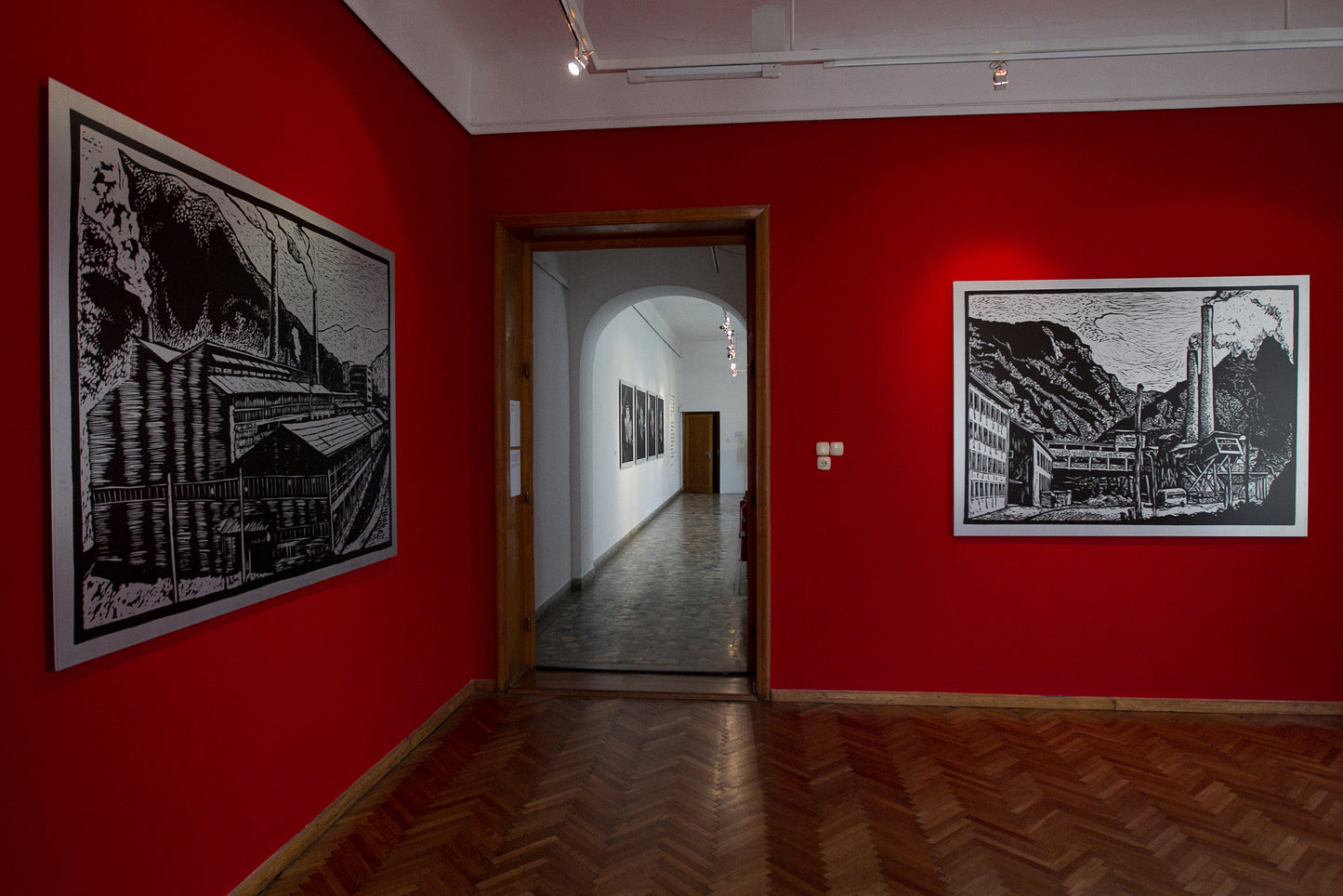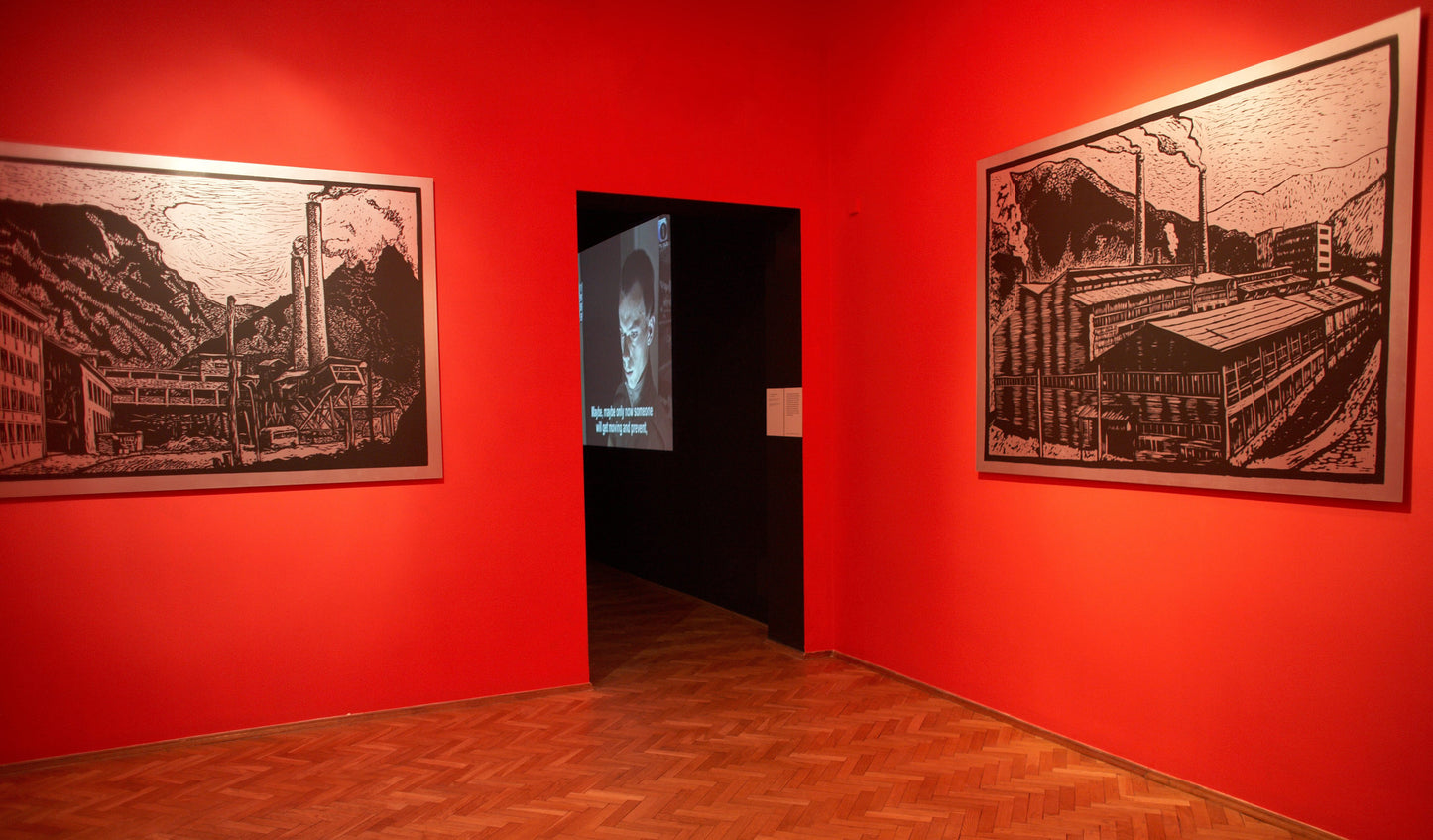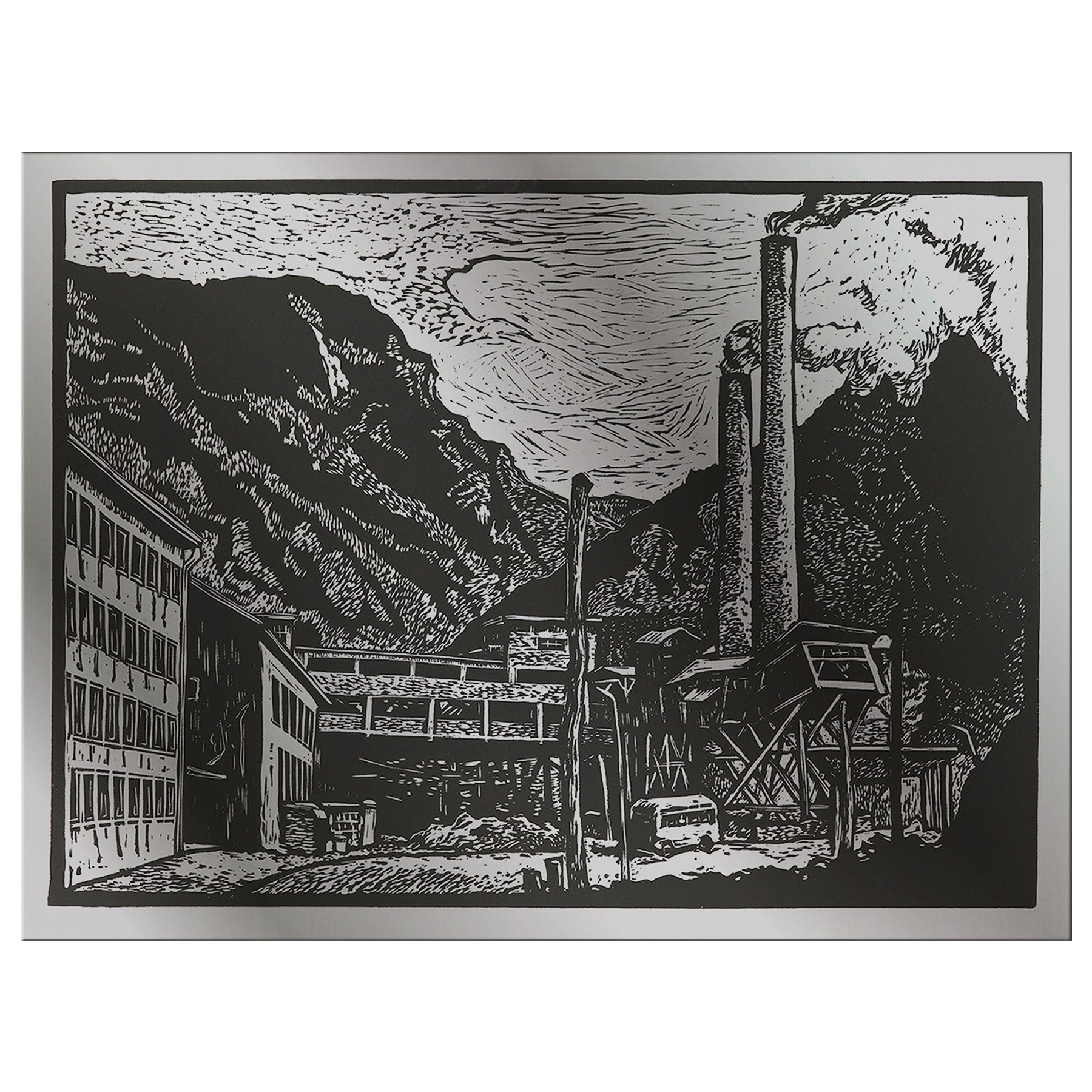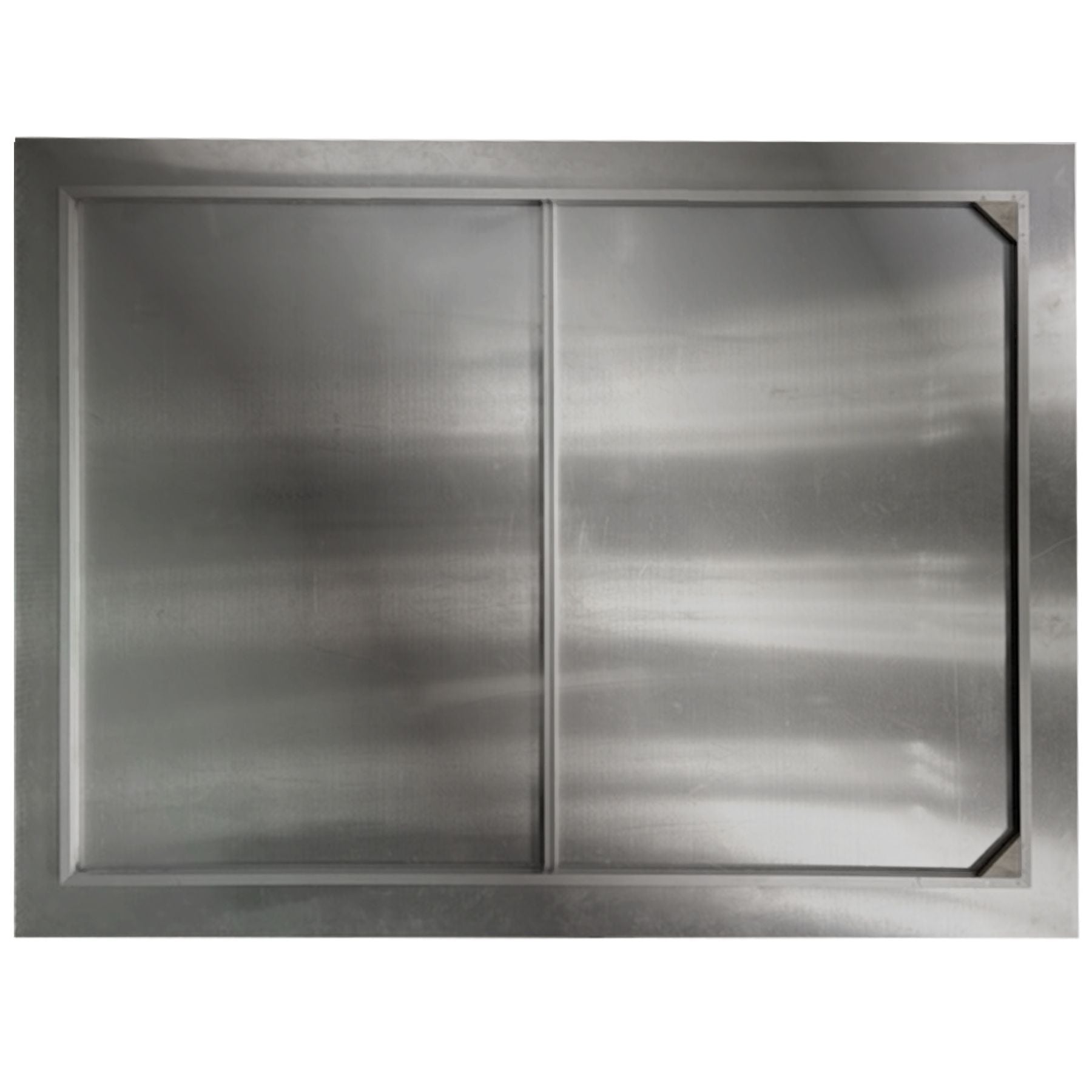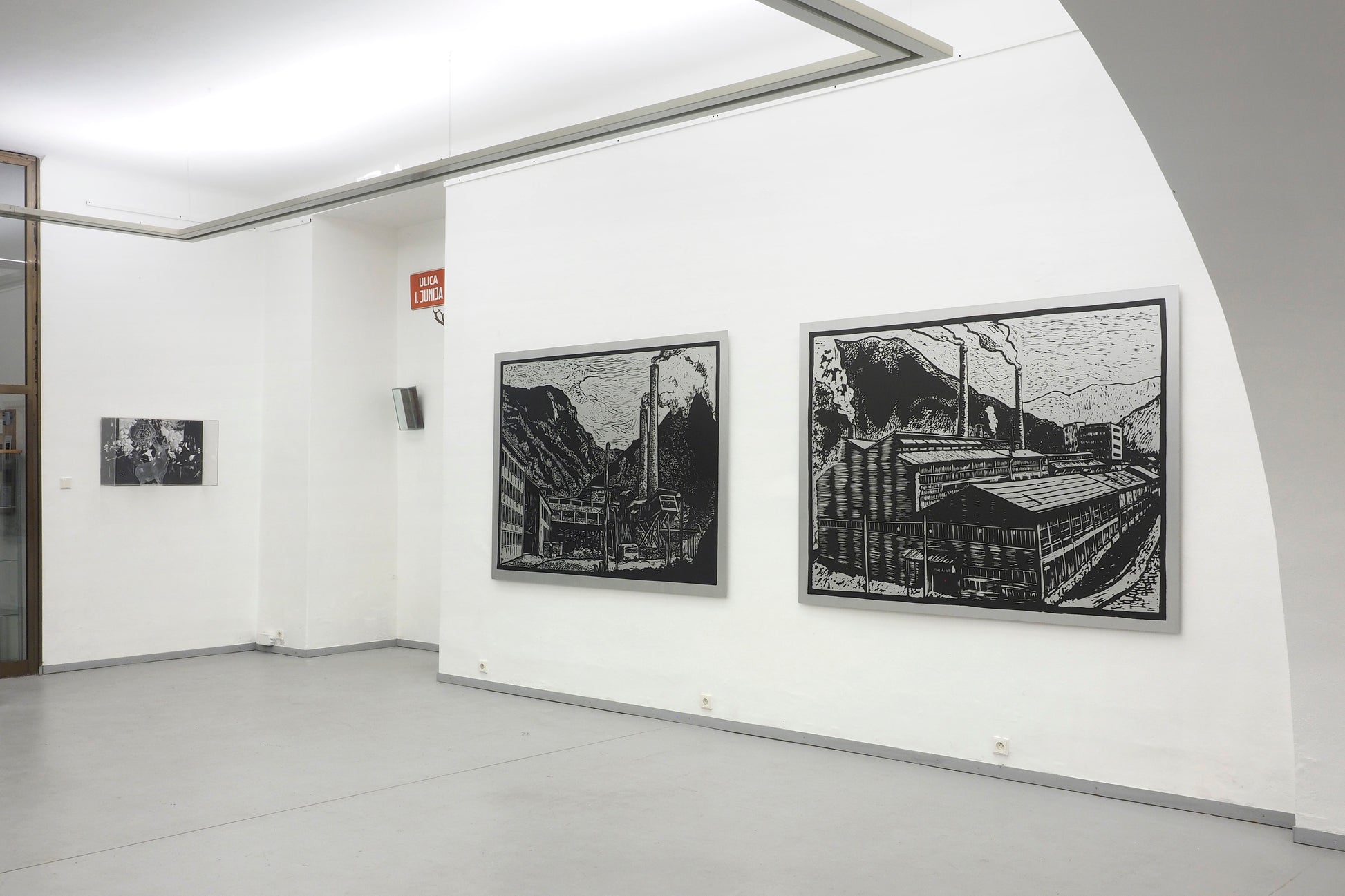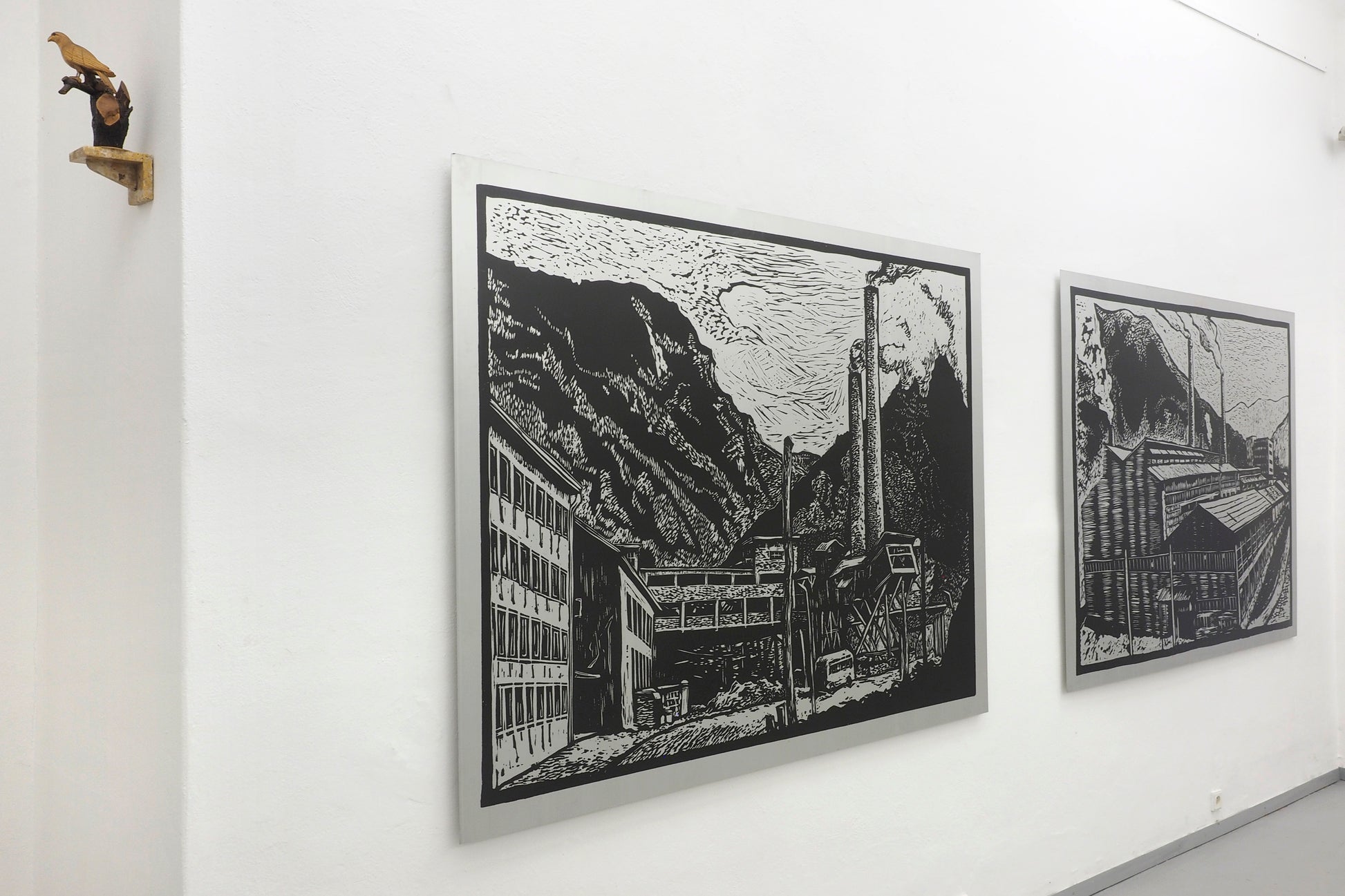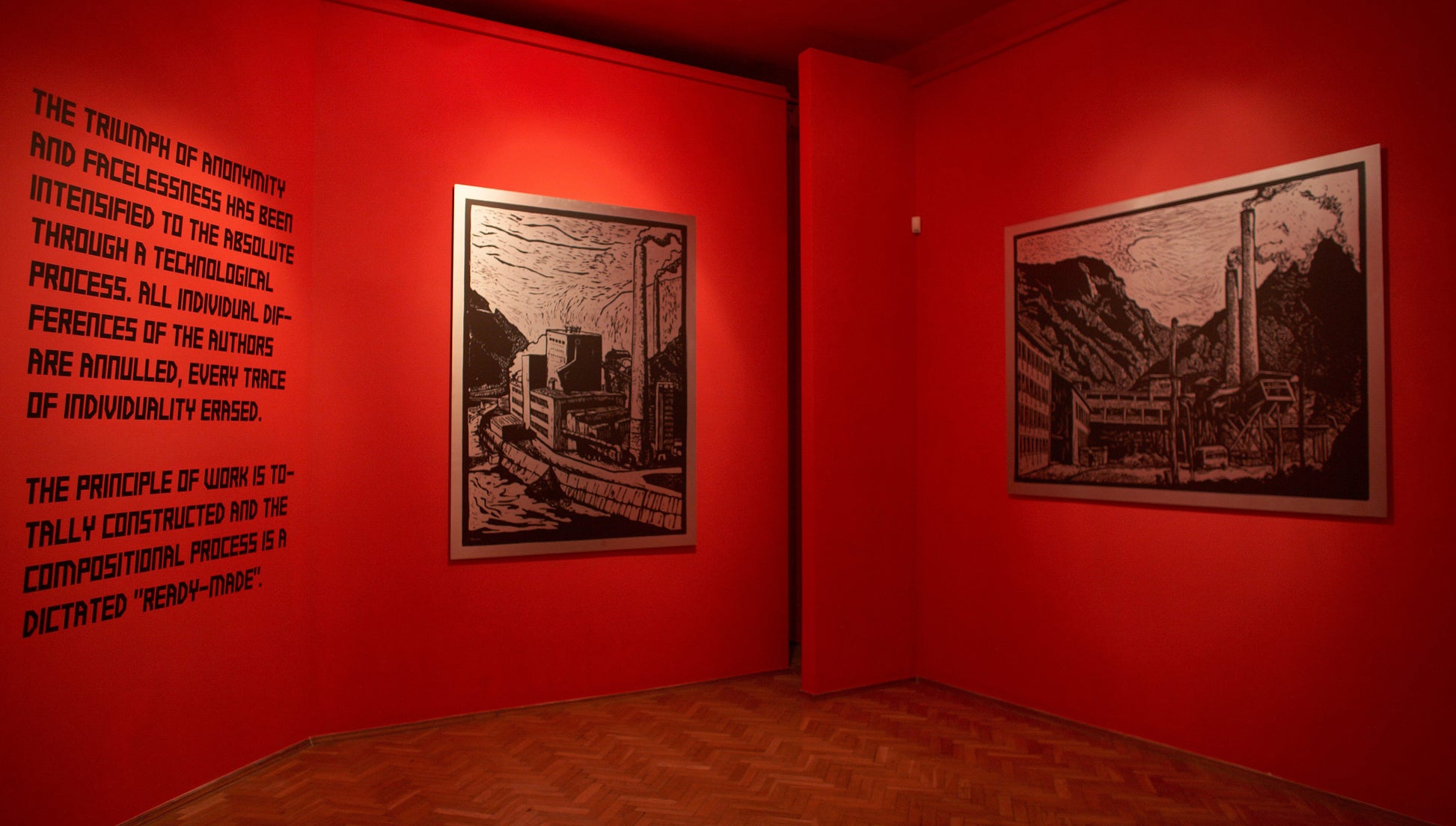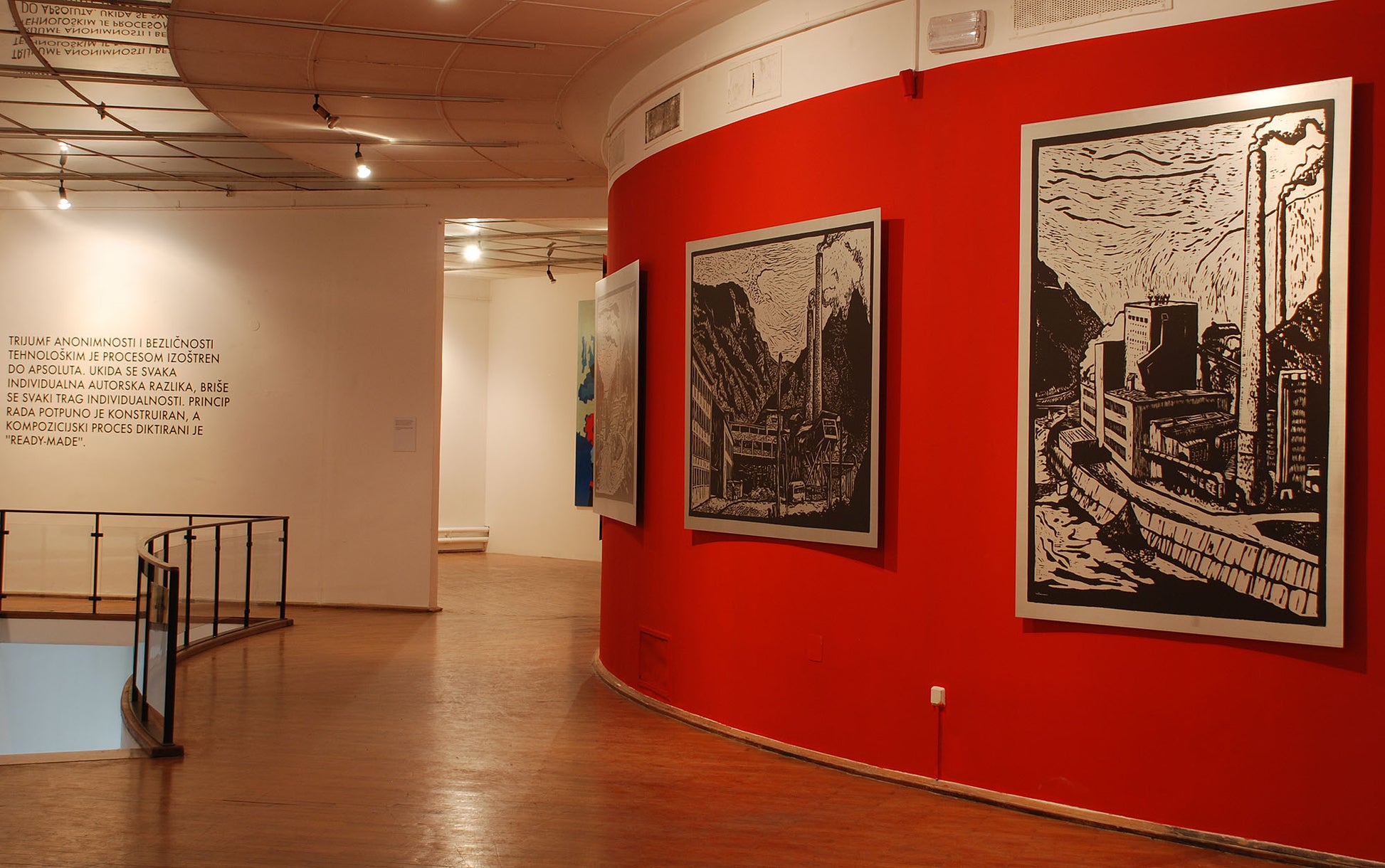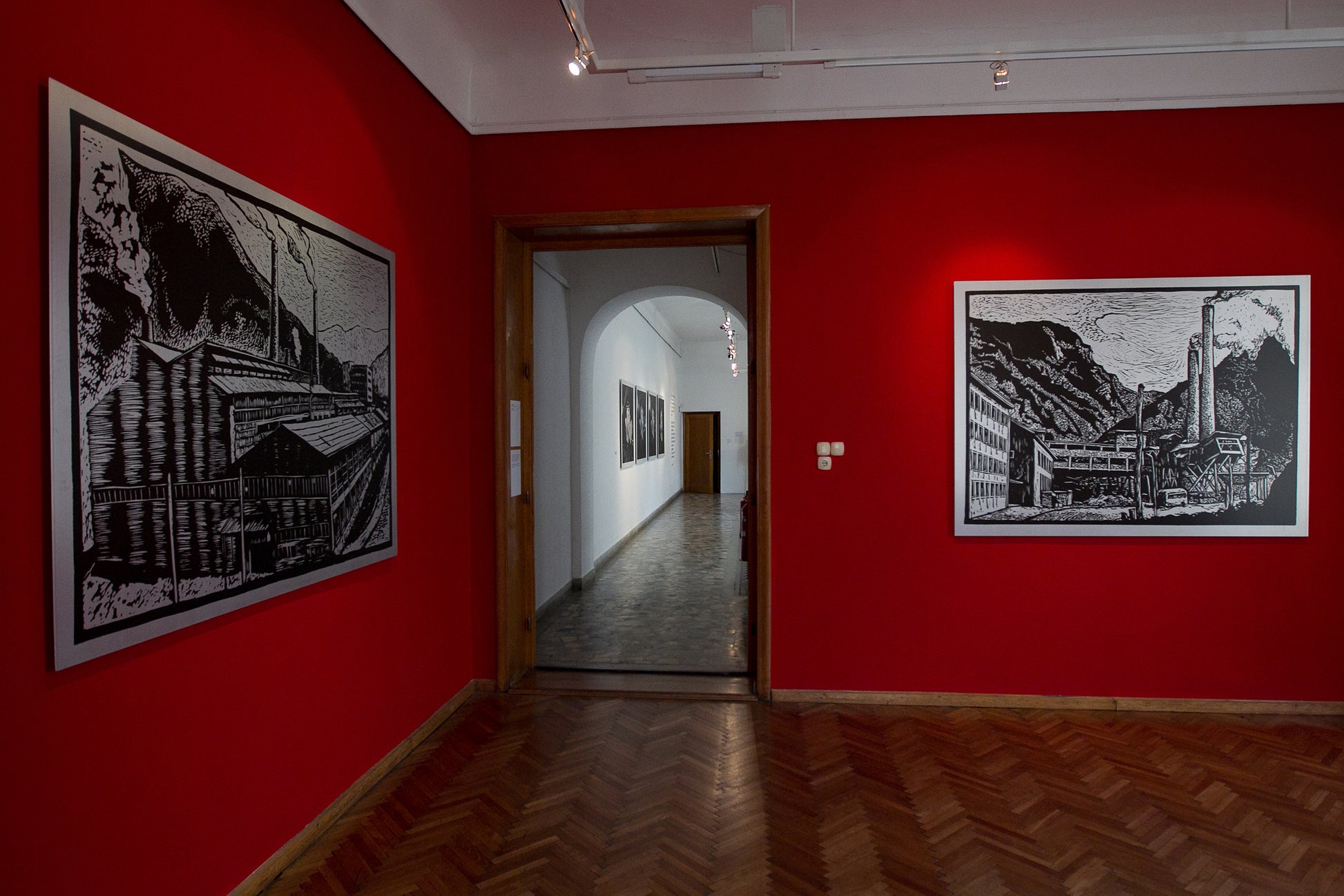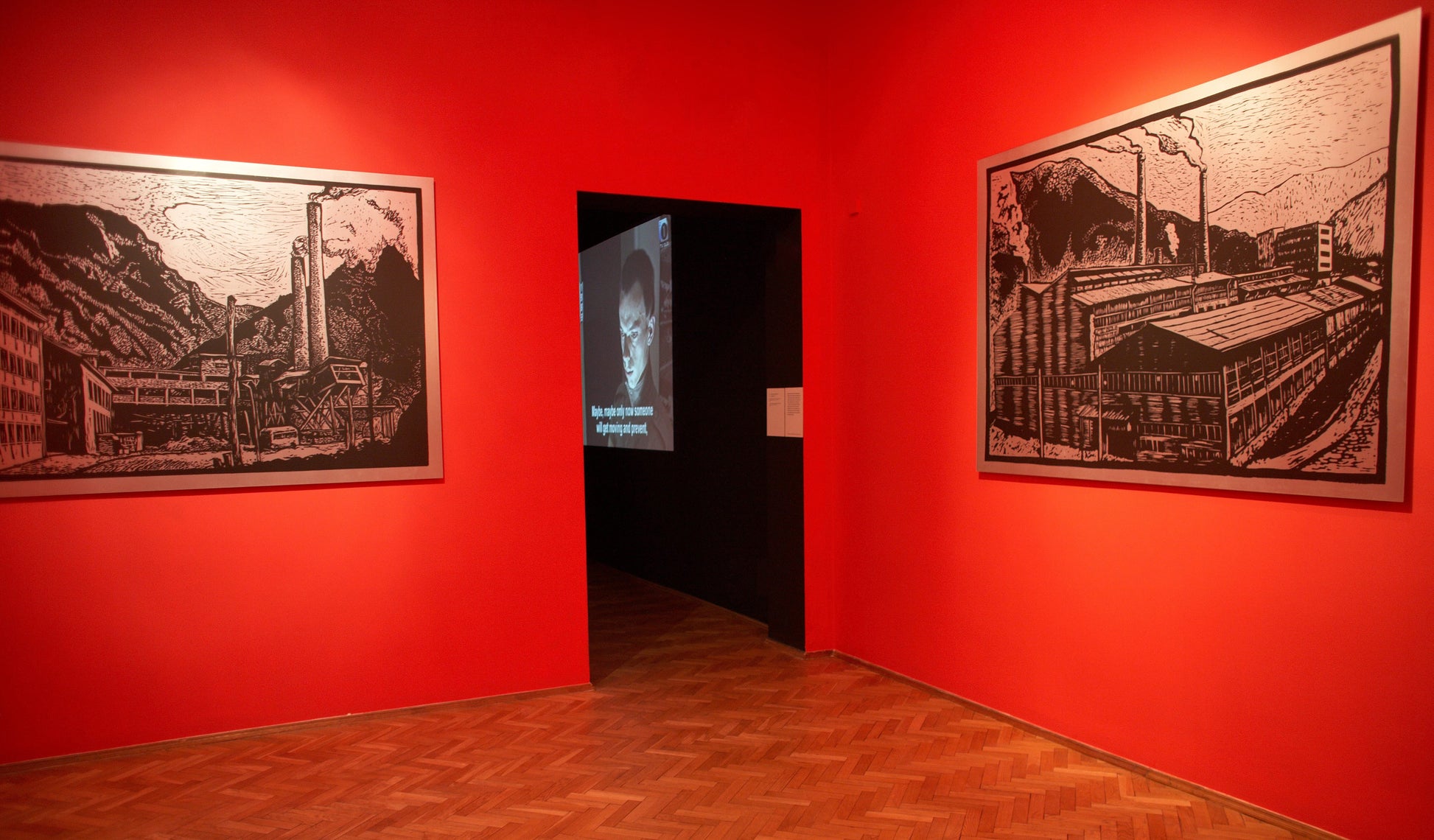Laibach WTC
RED DISTRICTS III, 1980 - 2009
Mixed media, print on aluminium plate, 150 x 200 cm
Unique work
Couldn't load pickup availability
RED DISTRICTS III - Cement Factory Trbovlje, signed and stamped by Laibach
The Trbovlje Cement Factory is one of the oldest companies in Slovenia, having been in operation since 1876, when the first clinker kiln for cement production was commissioned. Local limestone-rich deposits and the proximity to the railway and the Sava River presented excellent conditions for cement production. After the end of the Second World War, during which cement production fell sharply, the Cement Works was part of the Trbovlje Coal Company. In 1947, however, it was nationalised and in 1950 the first Workers' Council of the factory was elected. By 1951, the Cement factory produced between 110,000 and 120,000 tonnes of cement annually, which led to it being awarded the Transitional Flag and the recognition of the Government of the Federative People's Republic of Yugoslavia as the best collective within the cement industry in Yugoslavia.
Since 2002, it has been owned by the Lafarge Group, a French company that is the world's largest producer of cement. In recent years, the Cement Works has also been home to a waste incinerator, which has emitted toxic substances into the air. Due to pressure from local ecological organization Eko Krog (Eco Circle) and other members of the public, Lafarge was forced to suspend operations.
Some of the members of Laibach had been on work experience at the plant in the 1970s prior to the group being founded.
Terms and details:
Upon prior request, it is possible to view artwork live at a Laibach WTC location in Ljubljana, Slovenia. If you are interested in doing so, please write to wtc.support@laibach.org.
The listed price includes 9,5% value-added tax (VAT). If you are located outside the EU, or are a legal entity that is part of EU reverse charge system, you may take this into account when submitting your offer.
The stated purchase price is valid upon collection at a Laibach WTC location in Ljubljana and does not include the shipping, insurance, customs and excise charges, or import / export fees. After the payment for the artwork will be received, the Laibach WTC team will contact the buyer regarding collection or shipping.
Upon prior agreement with the buyer, and at the buyer’s expense, Laibach WTC can arrange shipping and possible insurance of the item. The shipping fee will depend on the location of the buyer and the size and weight of the item. When exporting artwork outside the EU, Laibach WTC will also prepare the necessary documentation for export customs clearance, but the buyer will be responsible for the payment the customs and excise and export / import fees.
For all other issues, the Terms of service of the Laibach WTC online store apply.
Laibach first presented the motifs of the Red Districts in 1980 at the Delavski dom (Workers' Home) culture centre in Trbovlje – at an exhibition that never took place (because it was banned by the local municipal authorities). Subsequently, Laibach presented the same motifs at their first exhibitions in Belgrade (Srećna galerija, 1981), Ljubljana (ŠKUC Gallery, 1982), and Zagreb (PM Gallery, 1983).
In the following decades, the group showed various variations of the Red Districts in some of their major exhibitions. In 2009, eight motifs were printed on aluminium plates and presented at retrospectives of their visual work in Łódź (Muzeum Sztuki, 2009), Maribor (UGM, 2011), Zagreb (HDLU, 2011), as well as in Olomouc (Galerie Caesar, 2016) and some other galleries.
The original linocuts represent historical motifs from the so-called Red Districts, as the industrial basin of Slovenia in the Zasavje region is called, which encompasses the towns of Trbovlje, Zagorje, and Hrastnik, i.e. the environmental area where the band Laibach were formed in 1980. These ‘industrial’ motifs became part of the basic aesthetic content of Laibach, which never denied their industrial-cultural origins, and after the formal establishment of the broader umbrella art formation Neue Slowenische Kunst (1984–1992), these motifs were adopted and appropriated from Laibach by other NSK groups, most notably by the Irwin painting group.
Share
